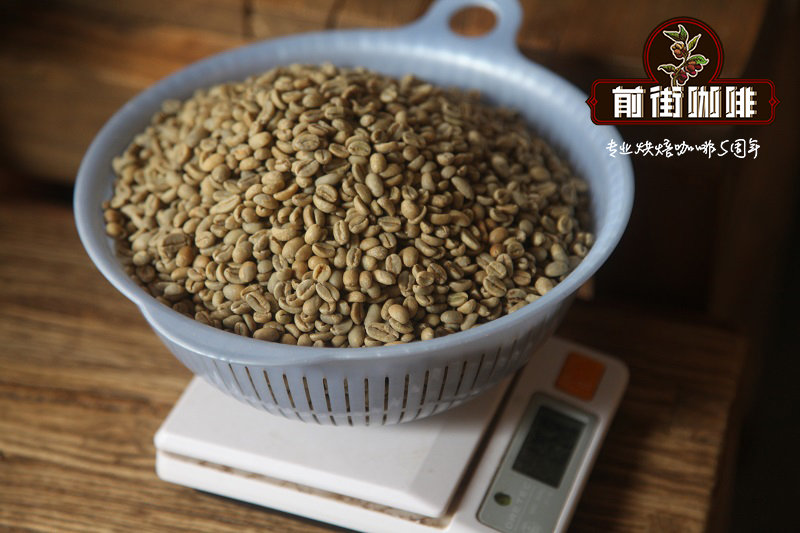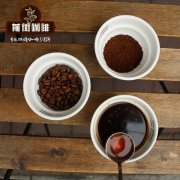Mexican Coffee and Women's Assistance Program how is the Mayan Harvest Program going now?

Coffee production has a legacy of inequality and abuse, so I am really excited that projects such as Mayan Mayan Harvest have changed traditional electric power by rewarding small-scale farmers for their hard work and providing women with a platform for self-sufficiency. When a woman is empowered, her entire family and community can be promoted. As a result, companies such as Mayan Mayan Harvest have created a more sustainable future for the specialty coffee industry.
About four years ago, I first met Mayan Harvest Rosalba Cifuentes Tovia, when she knocked on Royal's office. To our surprise, there was already a container in California! Since then, we have been committed to maintaining quality, finding markets and increasing sales to make it her sustainable business and increase its impact on the Bella Vista community in Mexico. Rosalba has been thinking about Bella Vista's employees. The hardships and hardships of her life were unimaginable, but these struggles made her the leader she is now. Wherever she goes, she is always learning and promoting coffee in the community. She has become an experienced blacksmith, and focuses on all aspects of quality. She is not afraid to take risks. Her perseverance and tenacity inspire me every day. Grilled with Revista. They did an excellent job in telling her story. You can even share their experiences with Rosalba from some of Royal Coffee's colleagues.
Rosaba's incredible story transcends the quality of her coffee. Altitude, freshwater abundance and geography help farmers maintain varieties that are now harder to find in Mexico, such as bourbon and Typica, which have adapted to these mountains for decades. Few coffee can achieve this complexity and floral and fruity aromas, while at the same time having a popular appeal. Your average customer will be happy to taste the high sweetness, chocolate, creamy body, while for the roaster, this coffee provides you with flexibility at different roasting levels. and almost from a single source of espresso to a limited edition or unique mixture.
Having said that, I'm happy to go to Bella Vista in February with five bakers who want to learn more about the project and get to know some farmers who grow their favorite coffee. We visited the new factory working with Rosalba's QC team and conducted a green analysis assessment with her staff.
We met some farmers I met on my first visit last year, such as Do ñ aFlora, whose health has partly improved, thanks to the increased income provided by Maya Mayan Harvest and the dental movement. This time, we tried to visit a new city that we had never been to before. Hugo Morales (Hugo Morales) proudly shows us his Qilac, a huge sweet pumpkin traditionally used in soups and desserts. Florismelda was very friendly and showed us how to pick the most ripe cherries. Maydileni led us to the top of the mountain to enjoy the beauty of the valley. Fabio shows us typica plants from decades ago and explains how he pruned heavily on his farm "el kijote". The grandfather of the Cifuentes family, Don Eugenio, explained these processes on his wet mill and shared some fresh Sugar cane juice. Edilio and Elsida Lopez invited us to his beautiful farm to cross the river through the drawbridge. We rushed back to town in time to prepare for the final goodbye, where town parties and dancing were prepared for us.
In this small rural community, we are warmly welcomed by foreigners and coffee buyers, but since we are almost all women, we are asked a lot of questions about our husbands. Of course, this opens the door to a frank dialogue with gender roles and the exchange of ideas, experiences and challenges, which is very interesting and fulfilling. On the third day, we met with about 20 women from women's groups at El Progreso and shared some of the roasted coffee we brought with coffee beans from around the world, a trivial gift that connected them to the global specialty coffee network.
Important Notice :
前街咖啡 FrontStreet Coffee has moved to new addredd:
FrontStreet Coffee Address: 315,Donghua East Road,GuangZhou
Tel:020 38364473
- Prev

The sweetness of Kaddura honey from La Loma Farm in Taragu, Costa Rica is very popular.
Costa Rica Tarrazu Don Mayo Cascabeles region: San Jose, San Marcos, Tara beads treatment: washing and drying: elevated bed drying varieties: Kaddura Grade: SHB EP this cup of coffee comes from the Don Mayo micro-processing plant of the Bonilla family. This is one of the truly oldest microprocessing plants, which began in 2003, Hector.
- Next

Introduction of Rwanda Coffee Kanye processing Plant | Urban Baking Bourbon has different African flavor.
Nyamasheke treatment in the western province of Rwanda: wet treatment (cleaning) drying method: patio sun-dried varieties: bourbon Kanyege cleaning station is hidden in the Nyamasheke area of the western province of Rwanda. Kanyege is 1870 meters above sea level and is located on a hill above the site of Kanzu. The coffee they process comes from farmers up to 2000 meters high.
Related
- Detailed explanation of Jadeite planting Land in Panamanian Jadeite Manor introduction to the grading system of Jadeite competitive bidding, Red bid, Green bid and Rose Summer
- Story of Coffee planting in Brenka region of Costa Rica Stonehenge Manor anaerobic heavy honey treatment of flavor mouth
- What's on the barrel of Blue Mountain Coffee beans?
- Can American coffee also pull flowers? How to use hot American style to pull out a good-looking pattern?
- Can you make a cold extract with coffee beans? What is the right proportion for cold-extracted coffee formula?
- Indonesian PWN Gold Mandrine Coffee Origin Features Flavor How to Chong? Mandolin coffee is American.
- A brief introduction to the flavor characteristics of Brazilian yellow bourbon coffee beans
- What is the effect of different water quality on the flavor of cold-extracted coffee? What kind of water is best for brewing coffee?
- Why do you think of Rose Summer whenever you mention Panamanian coffee?
- Introduction to the characteristics of authentic blue mountain coffee bean producing areas? What is the CIB Coffee Authority in Jamaica?

